#hexagonal pored polypore mushrooms
Explore tagged Tumblr posts
Text
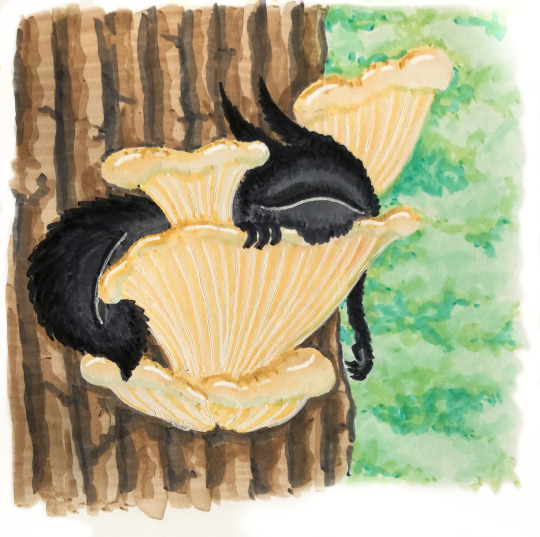
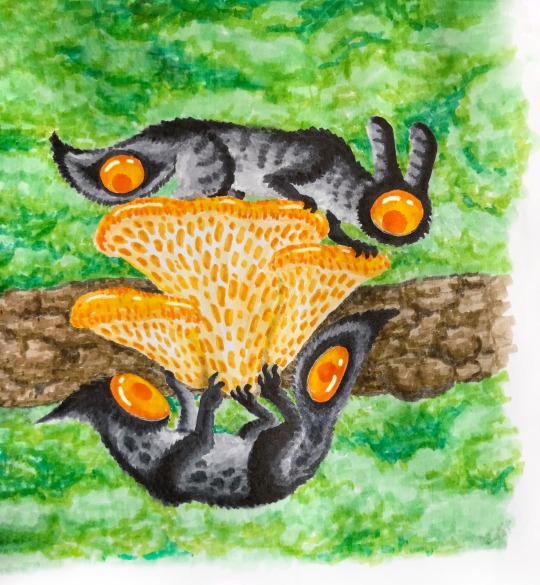


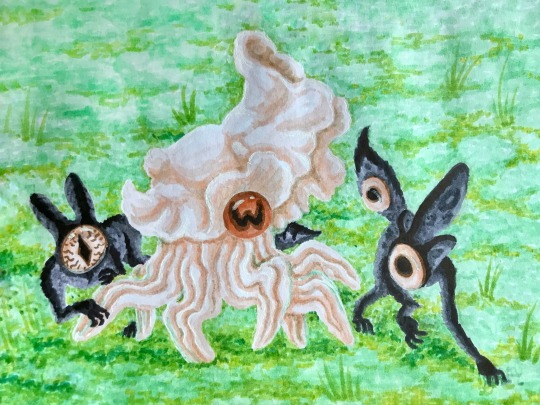
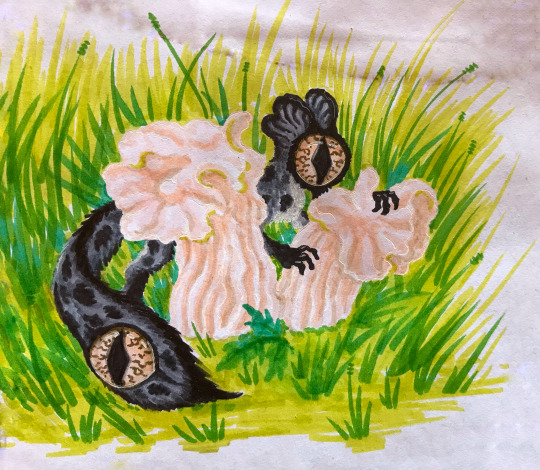

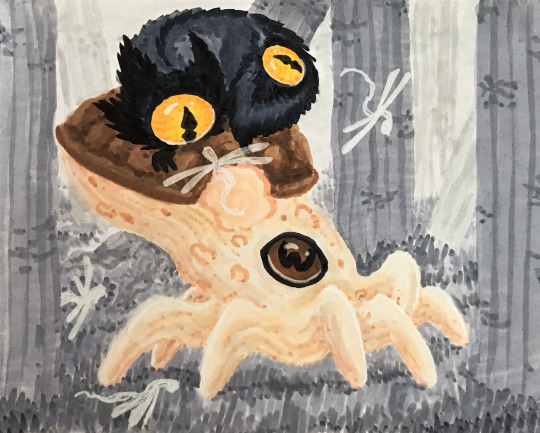
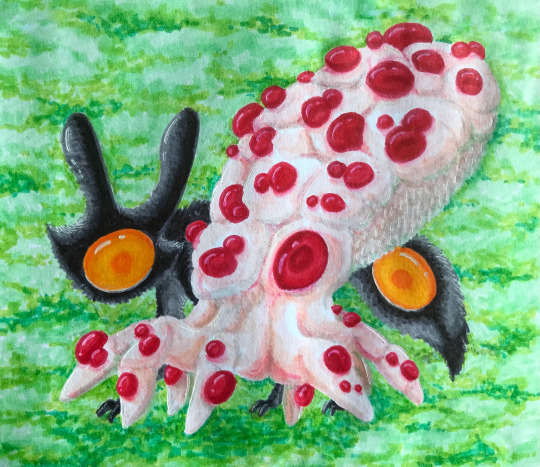
A whole bunch of sootcat creatures and mushrooms.
#monsters#creature design#oyster mushrooms#hexagonal pored polypore mushrooms#turkey tail#wrinkled peach mushroom#white saddle#chanterelle#bolete#bleeding tooth mushroom#creatures#fantasy art#mushroom creatures#mushtopus#sootcats#old art I still like#now in a nice themed post#and with alt text!
17 notes
·
View notes
Text
They take puzzles to infinity and beyond
They take puzzles to infinity and beyond
They take puzzles to infinity and beyond PALENVILLE, NY – While on a winding mushroom hunt north-south of the lake in New York’s Catskill Mountains, Jessica Rosenkrantz spotted a favorite mushroom: the hexagonal-pore polypore. Ms. Rosenkrantz loves life forms different from humans (and mammals in general), although two of her favorite humans joined the ride: her husband Jesse Louis-Rosenberg and…

View On WordPress
0 notes
Text
They’re Taking Jigsaw Puzzles to Infinity and Beyond
They’re Taking Jigsaw Puzzles to Infinity and Beyond
In upstate New York, two algorithmic artists make wooden puzzles inspired by natural forms. PALENVILLE, N.Y. — On a meandering mushroom hunt at North-South Lake in the Catskill Mountains of New York, Jessica Rosenkrantz spotted a favorite mushroom: the hexagonal-pored polypore. Ms. Rosenkrantz is partial to life-forms that are different from humans (and from mammals generally), although two of…

View On WordPress
0 notes
Text
(Don't eat them raw ever even after being dried)
If you see this post please get your own information.Don't want anyone getting sick! or worse!
Hexagonal-pored Polypore

Find:It causes a white rot of dead hardwoods. Found on sticks and decaying logs.on branches and twigs of hardwoods.
Time:spring and early summer
Description:its distinguishing features are its yellowish to orange scaly cap, and the hexagonal or diamond-shaped pores.The fruit bodies of P. alveolaris are 1–10 cm (0.4–3.9 in) in diameter, rounded to kidney- or fan-shaped. Fruit bodies sometimes have stems, but they are also found attached directly to the growing surface.The cap surface is dry, covered with silk-like fibrils, and is an orange-yellow or reddish-orange color, which weathers to cream to white. The context is thin (2 mm), tough, and white.Tubes are radially elongates, with the pore walls breaking down in age.The pores are large—compared to other species in this genus—typically 0.5–3 mm wide, angular or hexagonal; the pore surface is a white to buff color.The stipe,is 0.5–2 cm long by 1.5–5 mm thick, placed either laterally or centrally, and has a white to tan color. The pores extend decurrently on the stipe.growing singly or grouped together.
Look alikes:an edible look-alike dryad's saddle.springtime fungi as it is relatively common but depending on its age they become quite leathery making it virtually impossible to use in the kitchen. Dryad's saddle are much easier to find.they stick out as shelves from the lower portion of dead tree trunks.Individual caps grow anywhere from 10 to 60cm in diameter(4to24”) and can get to 5cm (almost2”) thick. Often in tiers, the caps are attached to the host tree by a short lateral stem that darkens towards the base. They are variable in outline but generally are semi-circular, kidney-shaped even fan-shaped. Dryad's saddle is broadly convex becoming flat, and can be slightly or deeply depressed. They are typically pale tan with an overlay of large, flattened, brown to almost black scales.grows saprotrophically on fallen logs and tree stumps. It can also be found growing parasitically on hardwood trees such as maple, elm, box elder and other deciduous trees. It is a white-rot fungus that causes decay in the heartwood of living trees. They will be found in the same locations every year.

Horse mushrooms

Find:grows in grassy areas, meadows and fields.
Time:appears in late summer or fall.
Description:cap is up to 20 cm broad, smooth, dry, white to cream.cap is convex when young, then flattens in maturity.flesh is firm and white to cream.gills are crowded, free from the stem, progressing from pink-tinged white to dark brown/black in age.stem is smooth, white, unchanging in color when bruised. Base of the stem does not stain yellow when cut or bruised.in young specimens, the underside of the partial veil exhibits a characteristic cogwheel-like pattern.in older specimens, the double veil progresses to a skirt-like ring around the stem.licorice/anise odor.only collect younger specimens that still have the characteristic cogwheel pattern on the unbroken veil; older specimens could be confused with poisonous look-alikes.
Look alikes:poisonous yellow stainer which is similar in appearance but has a stem that buises yellow at the base when cut or bruised.usually appearing in grassy areas in urban settings, but also known from thin woods."yellow-skin"—a feature that can be detected by rubbing the mushroom's surfaces with your thumb, especially near the edge of the cap and the base of the stem.other features will need to be matched: the flesh in the base of the stem (when sliced open) is bright yellow; the ring has a thick outer edge; and the whitish to pale brown cap is fairly large but surprisingly thin-fleshed.Odor reported as phenolic, but sometimes fait.

Hedgehog mushroom

Find:near birch,pine, spruce and western hemloc.
Time:August to October
Description:Look for pale (salmon pink to cream) 4 – 20cm diameter eccentric caps with thick, squat stipes (often several fused together). Small, detachable spines (1 – 5mm) on the underside of the cap. The general gestalt of hedgehog mushrooms is of stocky solidity, though the flesh does break easily
Look alikes:an inedible(but not poisonous) Bankera fuligineo-alba which is similar in appearance but instead of a smooth cap has one with embedded pine needles and organic debris.

Indigo Milk Cap

Find:mostly (but not exclusivly) in oak and pine woods.
Time:July to October
Description:This is a strikingly unique mushroom that is bluish, bleeds blue when cut; then turns somewhat greenish or bruises greenish. The cap is convex to sunken, with an inrolled margin at first; indigo blue when fresh, fading to pale grayish blue with deep greenish bruises. It has a sticky, yet smooth texture.Gills are attached, broad, and the spacing is close.They are dark blue, becoming paler,staining blue-green when bruised.When cooked it often stains green and will stain whatever it is cooked with as well.dehydrates well for later uses.
Look alikes:Two other species(do not eat)are all-blue when young, though they become brownish or yellowish later. L. chelidonium and L. paradoxus also don’t have blue milk; their milk is yellow and brown, respectively.


#Polypore#mushrooms#Hexagonal-pored#horse mushrooms#yellow stainer#hedgehog mushroom#milk cap#Indigo#Indigo Milk Cap#foraging#homesteading#forest#trees#plants#fungi
12 notes
·
View notes
Photo
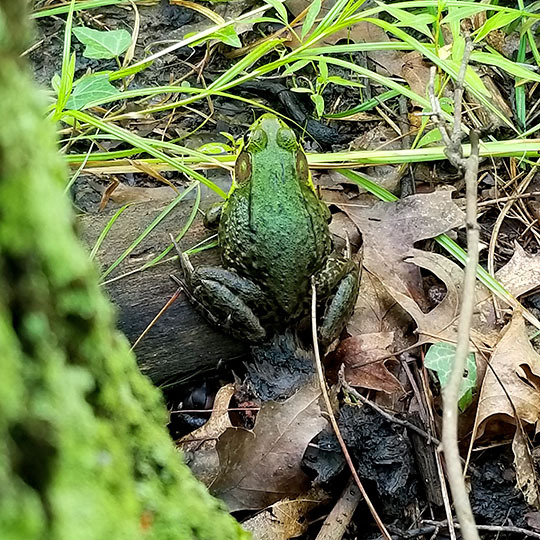


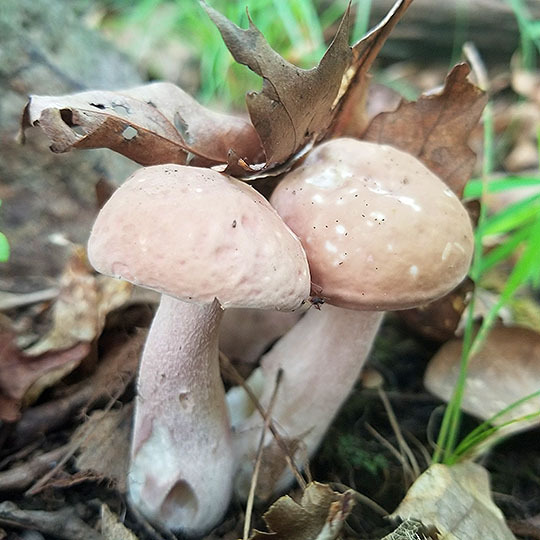
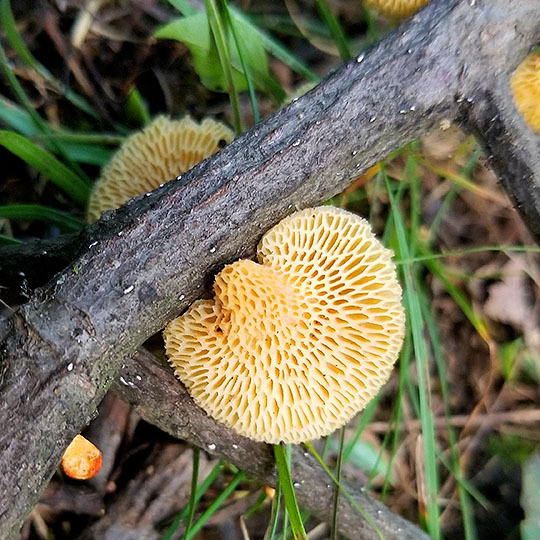

Some kind of oysterling mushroom, Hericium sp., boletes and a hexagonal-pored polypore. And a heron and frog, of course
#mushrooms#mycology#fungi#nature photography#dirtcore#cottagecore#goblincore#forestcore#woods#foraging#moss#frog#heron#bird watching#animals#nature#the fungus among us#hericium#bolete#polypore
267 notes
·
View notes
Photo






Every December, I re-post a few of the best photos I took that year. So, here are:
My Favorite Fungus Photos of 2018!
Splitgill Mushroom - Hexagonal-Pored Polypore - Ruffle Jelly - Western Scarlet Cup - Help, My Highlighter is Leaking - Green Elfcup
More Mushrooms / Lichens / Stones / Rusts / Jellies / Cups - Last Year’s Entries
108 notes
·
View notes
Photo

Some more #hexagonal pored #polypores from today. They're everywhere lol #mushroomspotting #mushroomphotography #mushrooms #fungus #fungusamongus #fungi #mushroomporn
#fungusamongus#mushroomphotography#mushroomspotting#hexagonal#mushroomporn#polypores#fungi#mushrooms#fungus
7 notes
·
View notes
Photo

Kinship (alternatively, family!)
First piece of 2017 is a pretty personal one! I’m actually happy with this, too.
Mushrooms/fungi hold a very special place in my heart, and are so important to me, spiritually and personally! I have trouble putting it into words, but those who know me might understand! So for today, I decided to do something more personal, and sketches some mushrooms from our photos from hiking trips.
They are: Sulphur shelf/chicken of the woods (left side), elm oysters (middle-bottom), honey mushrooms (middle), hexagonal-pored polypore (middle-right, on branch) and conifer blueing bracket fungus (Postia caesia) (bottom-right, on branch)
#mushrooms#fungus#nature#illustration#ink#cross hatching#fungi#sulphur shelf fungus#chicken of the woods#elm oyster mushrooms#honey mushrooms#hexagonal-pored polypore#polypore#shelf fungus#bracket fungus#conifer blueing bracket fungus#postia caesia#branch#decay#tree trunk#personal#symbolism#spiritual#witch#mushroom witch#stylized
25 notes
·
View notes
Text

Checking out the localities.
13 notes
·
View notes
Photo








All my musholotls from the 2021 mayshroom challenge. Some of these aren’t quite trypophobia friendly.
#art#marker art#creatu#mushroom art#lizards#mushroom creatures#saffron milkcap#golden chanterelle#hexagonal pored polypore#common pufball#black trumpet#shaggy mane#ink cap#devil's cigar#bleeding tooth#art by me
24 notes
·
View notes
Photo

This hexagonal pored polypore lizard might be up to something.
Trypophobia warning on this one.
7 notes
·
View notes
Photo




The “trypophobia and weird mushrooms“ test drawing collection.
#sketches#mushrooms#mushroom art#marker art#fungi#hexagonal pored polypore#wrinkled peach mushroom#bleeding tooth#black morel#art by me
3 notes
·
View notes